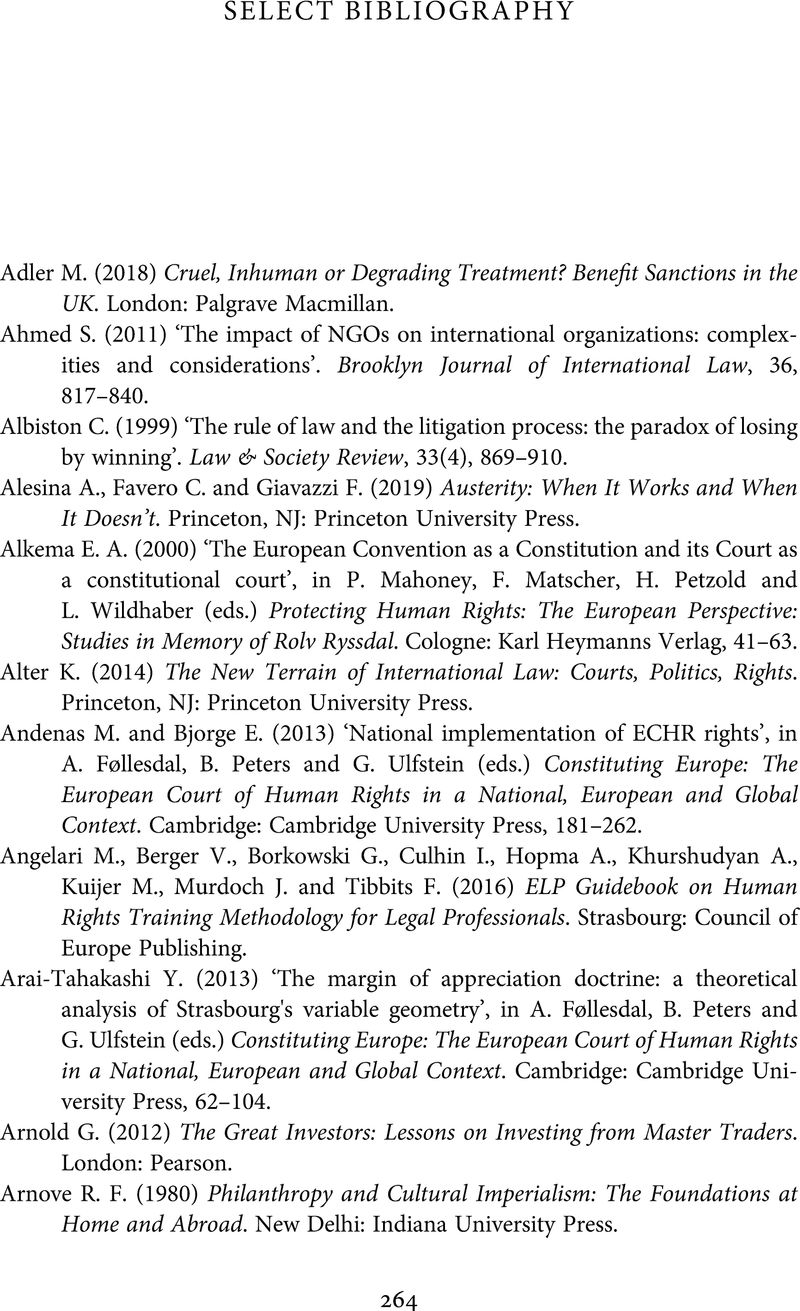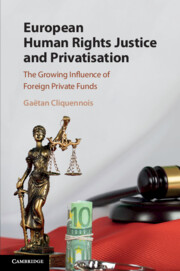Book contents
- European Human Rights Justice and Privatisation
- European Human Rights Justice and Privatisation
- Copyright page
- Contents
- Tables
- Foreword
- Acknowledgments
- Introduction
- Part I The Procedural Aspect of the Growing Influence of Private Foundations on the European Human Rights Justice System
- Part II The Substantive Dimension of the Growing Influence of Private Foundations on European Human Rights Justice
- Conclusion: Towards a Privatised Capture of Human Rights?
- Select Bibliography
- Index of Authors
- General Index
- References
Select Bibliography
Published online by Cambridge University Press: 06 October 2020
- European Human Rights Justice and Privatisation
- European Human Rights Justice and Privatisation
- Copyright page
- Contents
- Tables
- Foreword
- Acknowledgments
- Introduction
- Part I The Procedural Aspect of the Growing Influence of Private Foundations on the European Human Rights Justice System
- Part II The Substantive Dimension of the Growing Influence of Private Foundations on European Human Rights Justice
- Conclusion: Towards a Privatised Capture of Human Rights?
- Select Bibliography
- Index of Authors
- General Index
- References
Summary

- Type
- Chapter
- Information
- European Human Rights Justice and PrivatisationThe Growing Influence of Foreign Private Funds, pp. 264 - 276Publisher: Cambridge University PressPrint publication year: 2020



